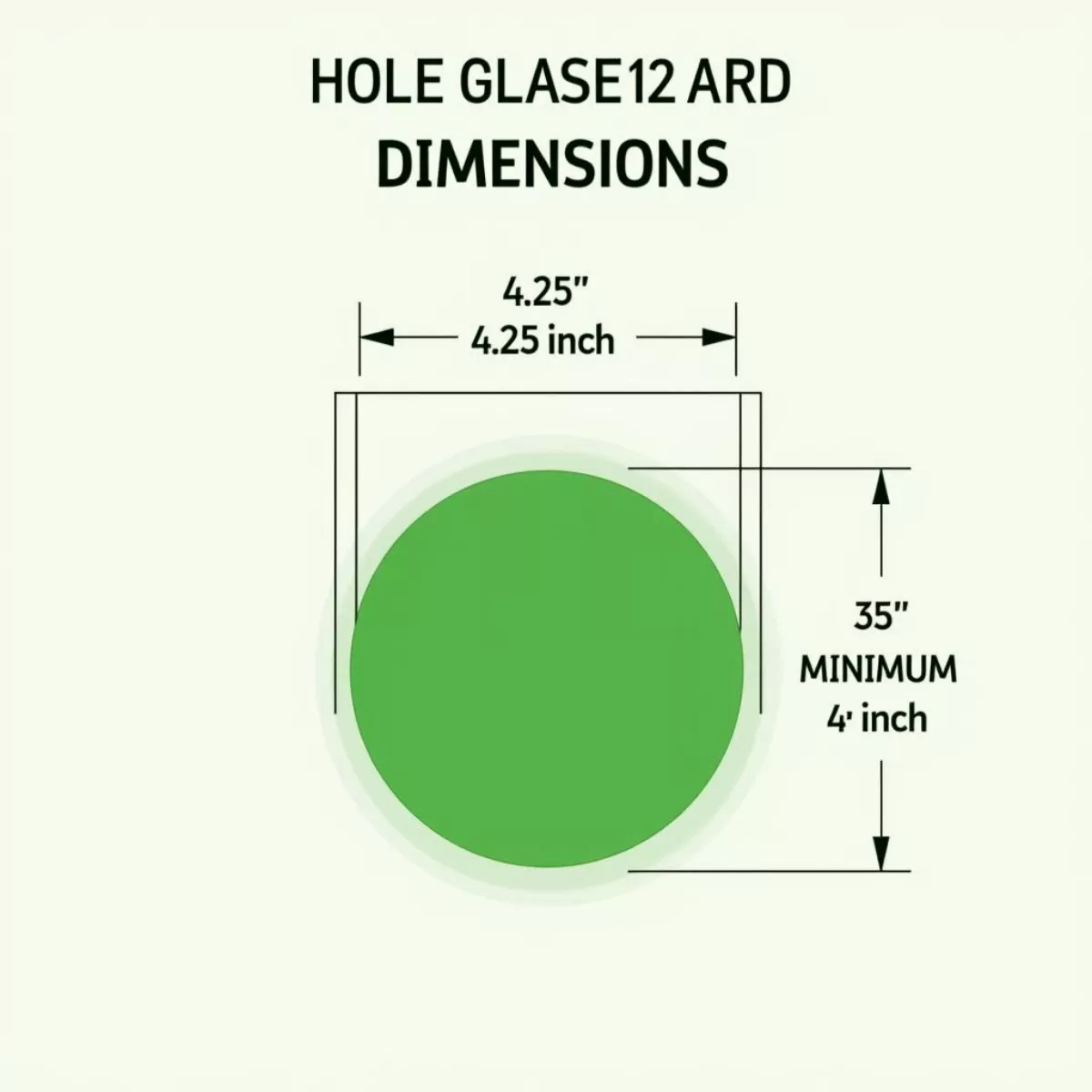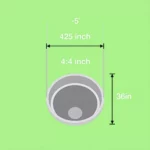Golf is a sport steeped in tradition, and every detail counts when it comes to playing the game. From the swing of the club to the subtle slopes of the green, every aspect contributes to the overall experience. One question often arises among players, new and seasoned alike: What is the diameter of a golf hole? Let’s dive into this crucial detail and explore its significance in the game of golf.
What is the Diameter of a Golf Hole?
The standard golf hole diameter is defined by the rules of golf. According to the United States Golf Association (USGA) and the Royal and Ancient Golf Club of St Andrews (R&A), the diameter of a golf hole must be 4.25 inches (or approximately 10.8 centimeters). This measurement has been in place since the 19th century and has become a fundamental aspect of the game.
Why Does the Diameter Matter?
Understanding the size of the golf hole is important for several reasons:
- Standardization: A uniform hole size ensures that golfers around the world compete on equal grounds. It creates a standard for course design and uniform experience.
- Game Strategy: The size can influence how players strategize their shots. A smaller hole might challenge players to refine their approach, while a larger hole offers a different experience.
- Equipment Design: Manufacturers of golf balls, clubs, and other equipment take the hole size into account when designing their products to optimize playability.
 Golf hole dimensions
Golf hole dimensions
Historical Considerations
The diameter of the golf hole has evolved over time. Initially, holes were often much larger, with some records indicating they were up to 11 inches in diameter. However, as the sport matured into the structured game we know today, the dimensions were standardized to foster skill and precision.
Current Guidelines for Golf Holes
To further elaborate on the standard size, let’s look at the specifications that are in place:
- Diameter: 4.25 inches (10.8 cm)
- Depth: A minimum of 4 inches (10.16 cm) is typically required.
- Placement: The hole should be on the putting green and positioned appropriately to ensure fair play.
Importance of Hole Placement
Not only is the hole’s size pivotal, but its placement on the green significantly influences gameplay. Factors like slope, grass type, and surrounding hazards affect how a ball will behave around the hole. Here are considerations for hole placement:
- Safety: The hole should be placed in an area that avoids undue risk for players—far from the edges of slopes or raised areas.
- Challenge Level: Placing the hole in a more difficult position can provide a greater challenge, increasing the difficulty of the course.
- Fairness: To ensure equal chances for all players, the hole should be centrally located on the green, displaying a fair aspect.
 Strategic golf hole placement on a green
Strategic golf hole placement on a green
The Impact of Technology on Golf Hole Design
Advancements in technology have led to innovations in golf hole design and the materials used for the hole itself. Here are a few noteworthy changes:
- Hole Liners: These liners can enhance durability and maintain the shape of the hole over time.
- Smart Golf Holes: Some courses are beginning to experiment with technology that can assess playability.
Related Gear: Tools to Perfect Your Putting Skills
Aside from understanding the golf hole itself, investing in the right gear can also enhance your game. Here are some recommended tools for improving your putting skills:
- Putter: Choose a putter that feels comfortable in your hands.
- Putting Mat: Practice at home with a quality putting mat.
- Alignment Aids: Use alignment tools to improve your accuracy.
 Essential putting equipment for golfers
Essential putting equipment for golfers
Key Takeaways
- The standard diameter of a golf hole is 4.25 inches.
- Uniform hole size ensures fairness in competitive play.
- Hole placement can influence both gameplay and overall player experience.
- Technological advancements are shaping the future of golf hole design.
Frequently Asked Questions (FAQs)
Here’s a roundup of common questions golfers ask about the diameter of a golf hole:
1. Is the diameter of a golf hole the same across all courses?
Yes, the diameter of a standard golf hole is the same (4.25 inches) on all official courses.
2. Can the hole size be modified for specific tournaments?
Typically, no. Official tournaments must adhere to the standard hole size as specified by the USGA and R&A.
3. What is the depth of a golf hole?
The depth of a standard golf hole should be at least 4 inches.
4. How do green speeds affect putts?
Faster greens can make it more challenging to sink putts, regardless of the hole size.
5. Is there a difference in practice hole size at golf schools?
In most cases, golf schools adhere to the standard dimensions, including hole size, to maintain consistency with course play.
6. What are the benefits of a smaller hole during practice?
Practicing with a smaller hole can improve accuracy and focus, which can translate into better performance during actual gameplay.
7. Are golf holes always circular?
Yes, official golf holes are always round and adhere to the standard diameter.
8. What materials are typically used in golf hole construction?
Most golf holes are made from durable materials like plastic or steel to withstand the elements and wear over time.
9. Can the location of the hole on a green affect gameplay?
Absolutely! A strategically placed hole can challenge players and affect their strategy during play.
10. Why are golf holes sometimes painted or covered?
Painting or covering holes can help maintain their shape and protect them from damage, especially during off-seasons.
Conclusion
The diameter of a golf hole may seem like a small detail, but it significantly impacts the game’s integrity and player experience. Understanding this fundamental aspect of golf allows players to respect the sport’s history and embrace the exact nature of the game. Whether you’re teeing off at your favorite course or practicing at home, remember that every round counts. So, grab your putter, hit the greens, and aim for that 4.25-inch target!
For further reading on golf techniques or strategies, check out our articles on putting techniques and golf course etiquette. Happy golfing!

